RARE! WWII 1945 U.S.S. Randolph (CV-15) Battle of Okinawa "Theater-Made" April 5th - May 31st, 1945. After Action Report with Combat Photographs (7 Pages)
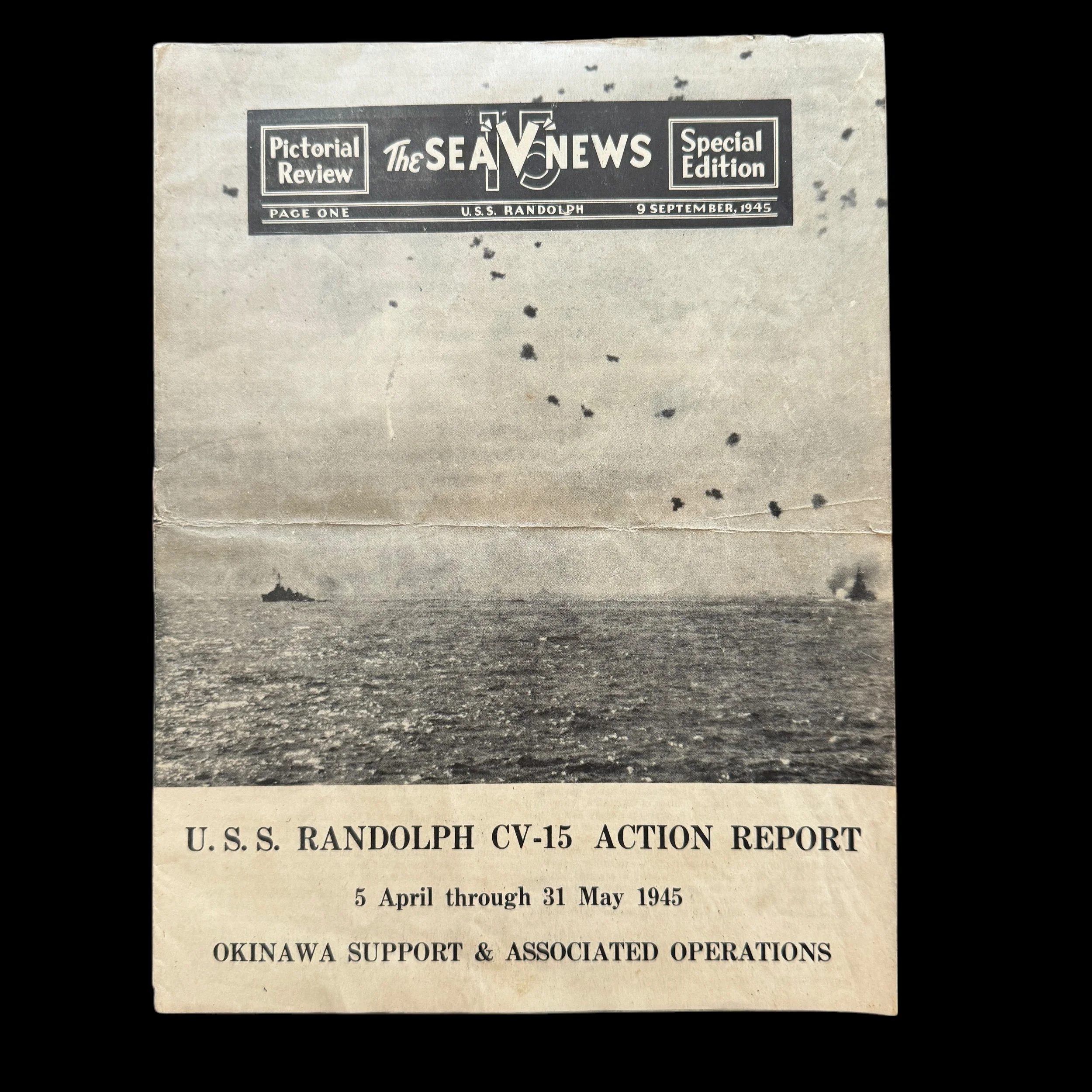

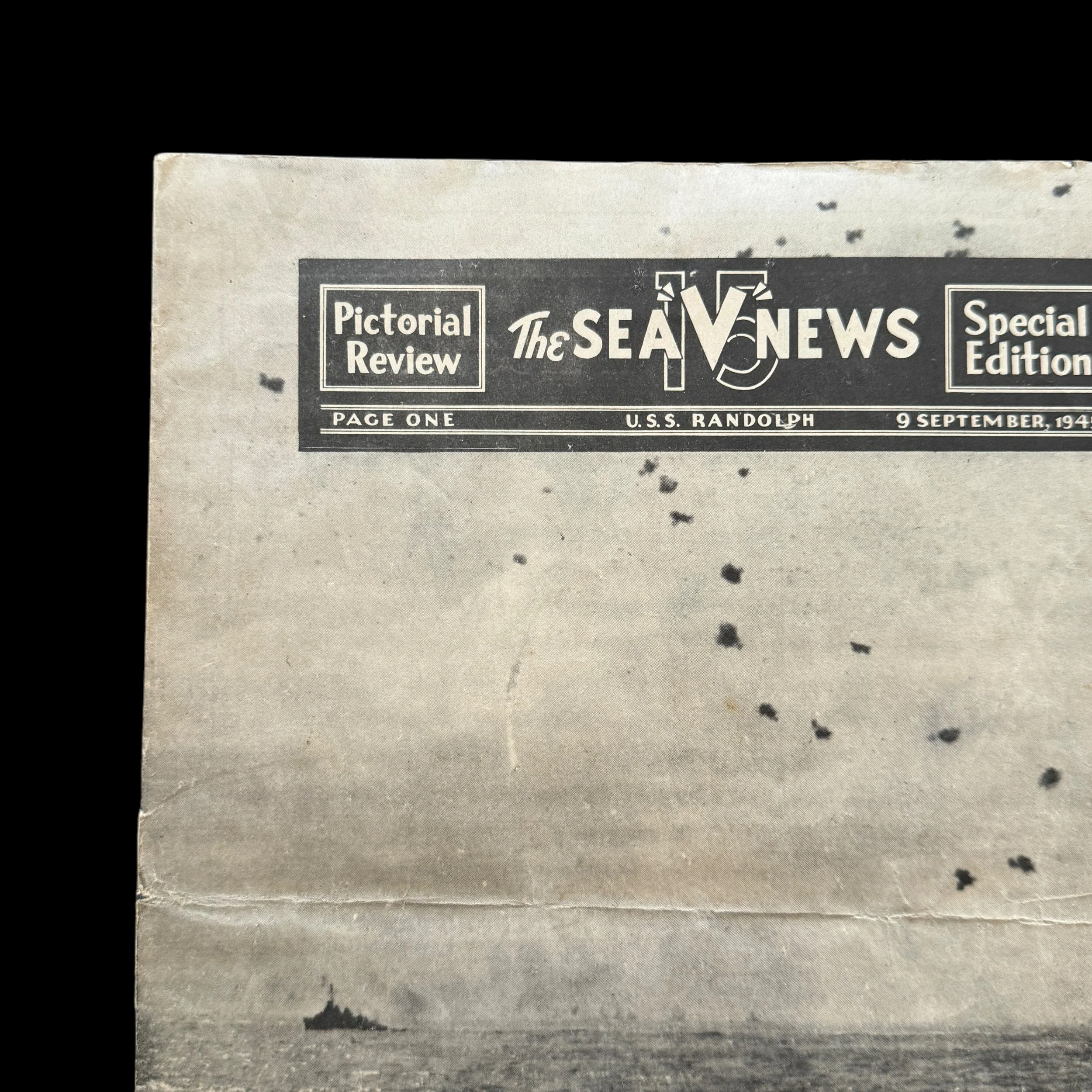
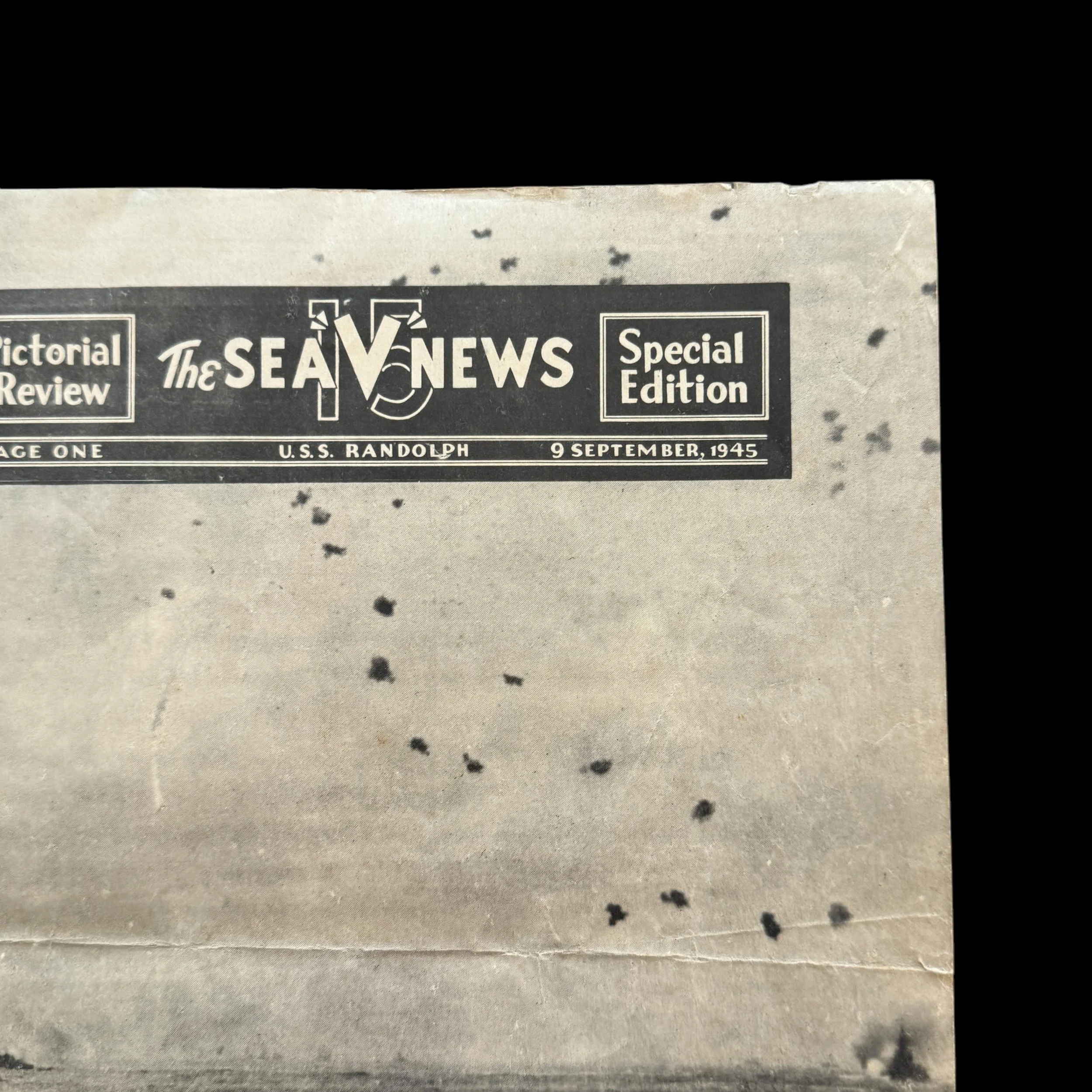
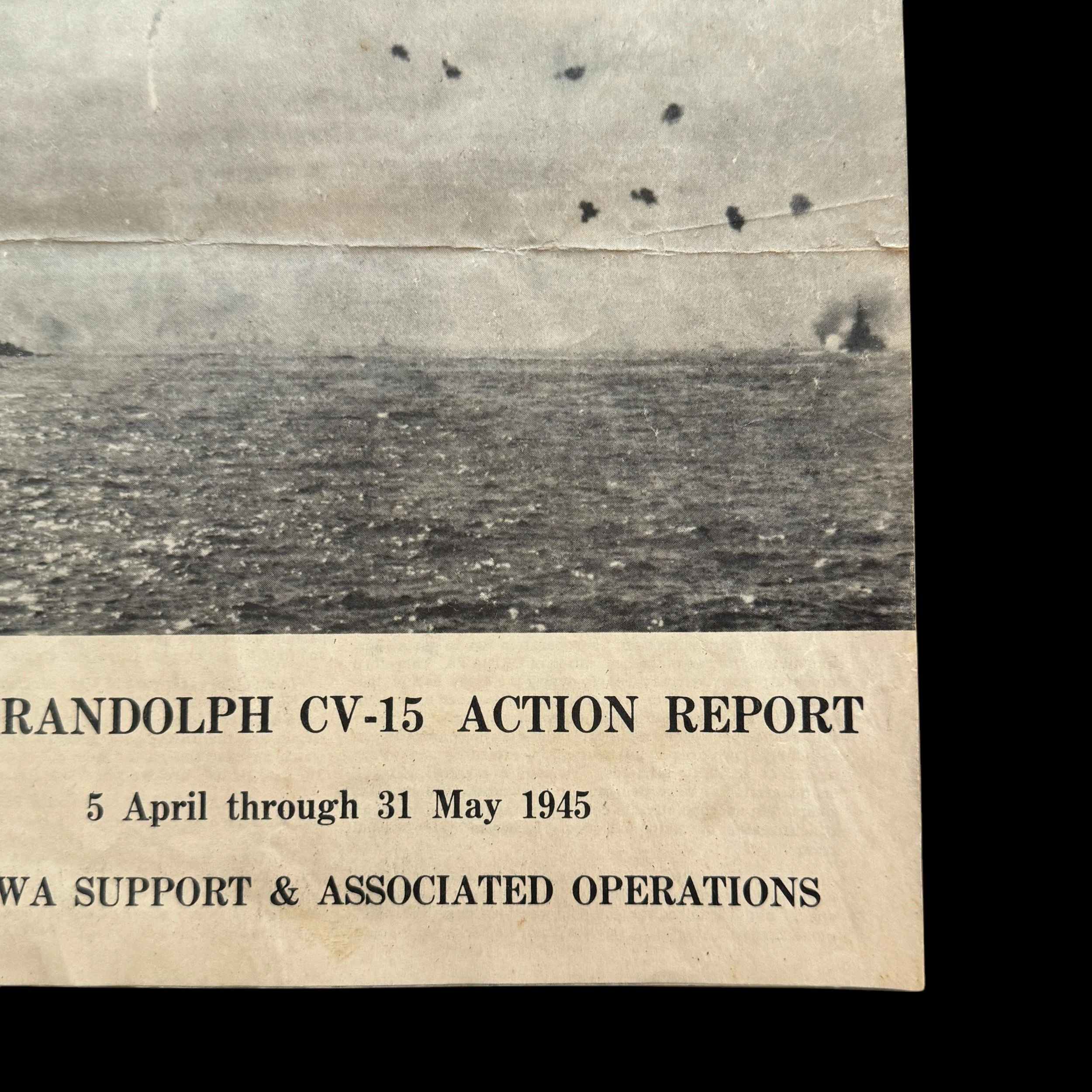
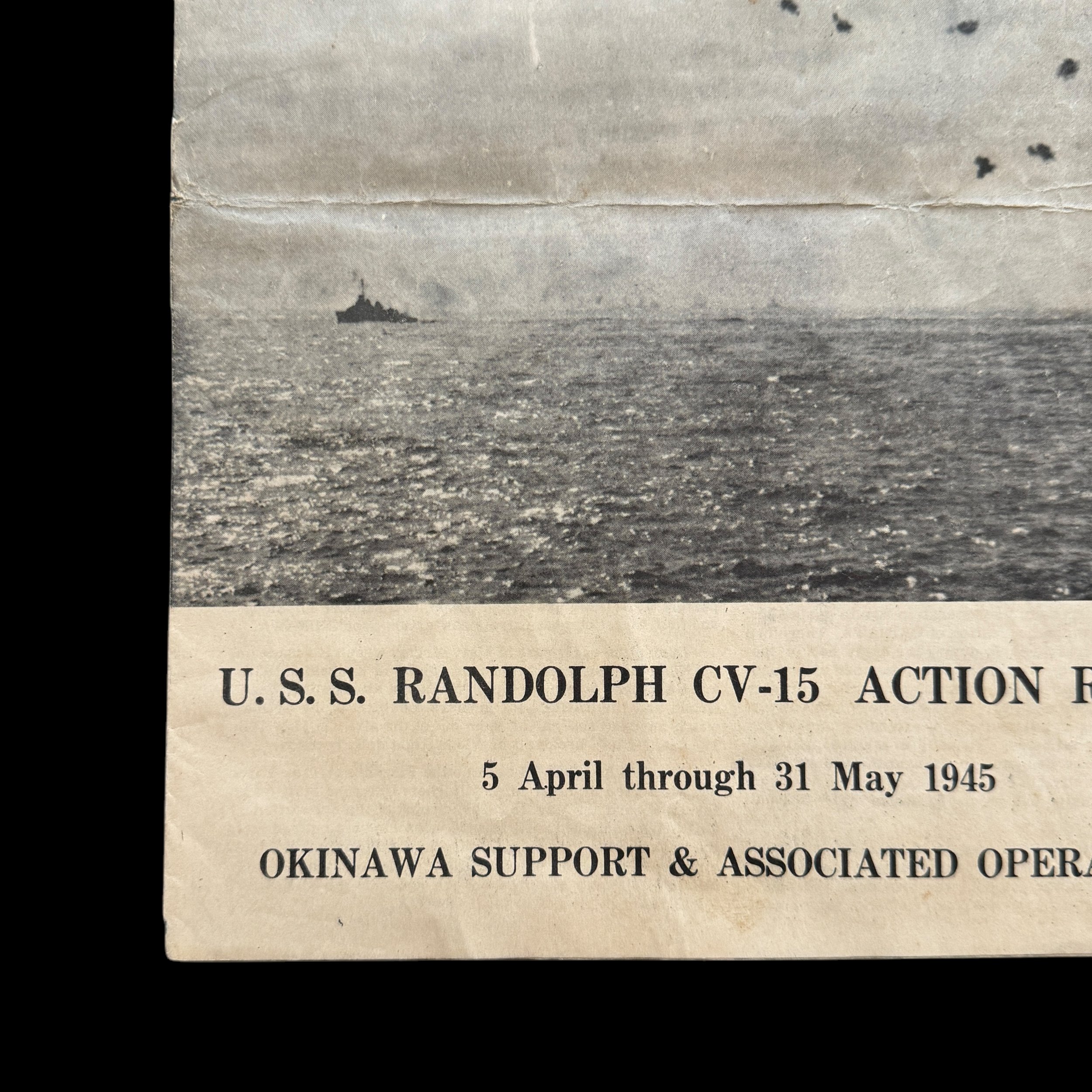
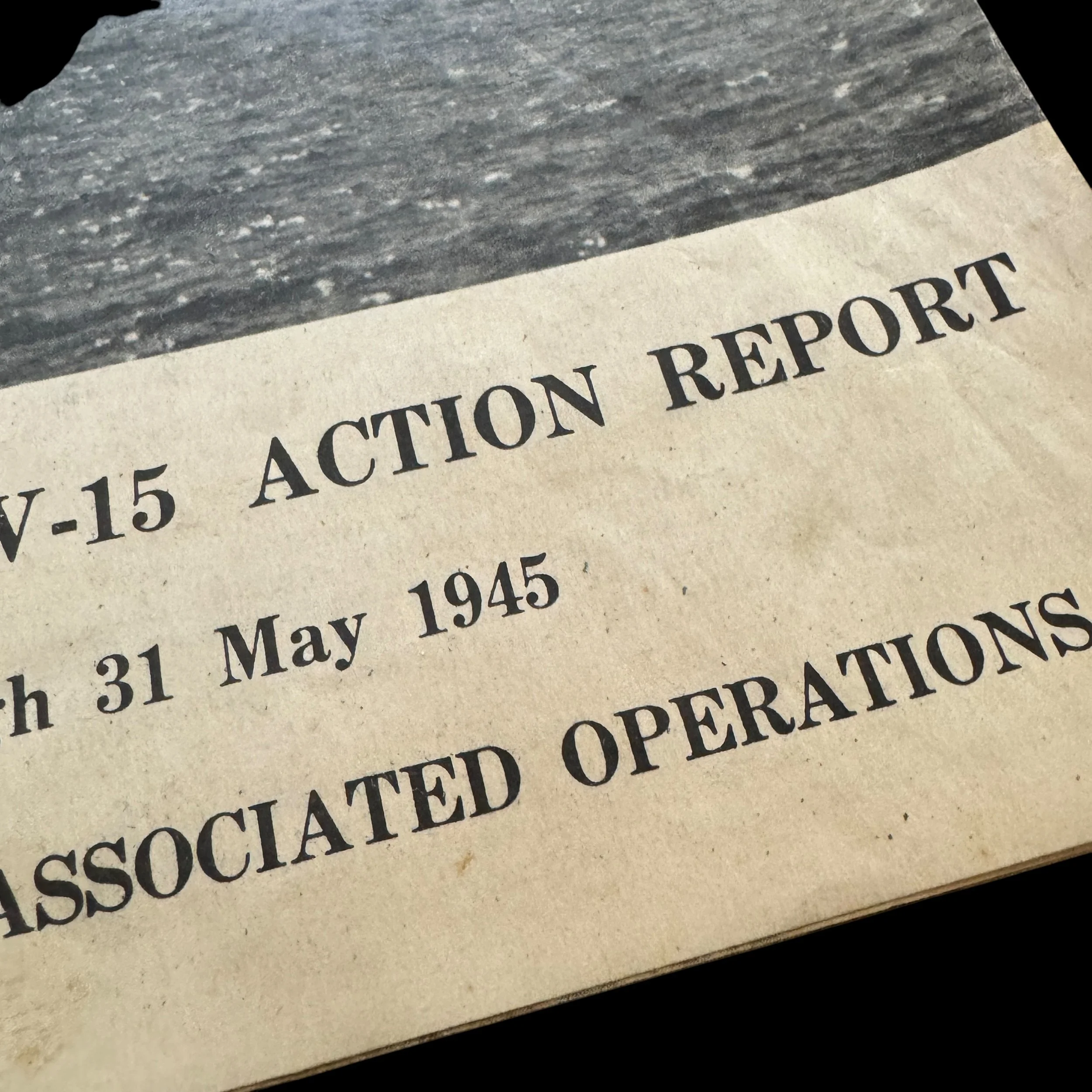
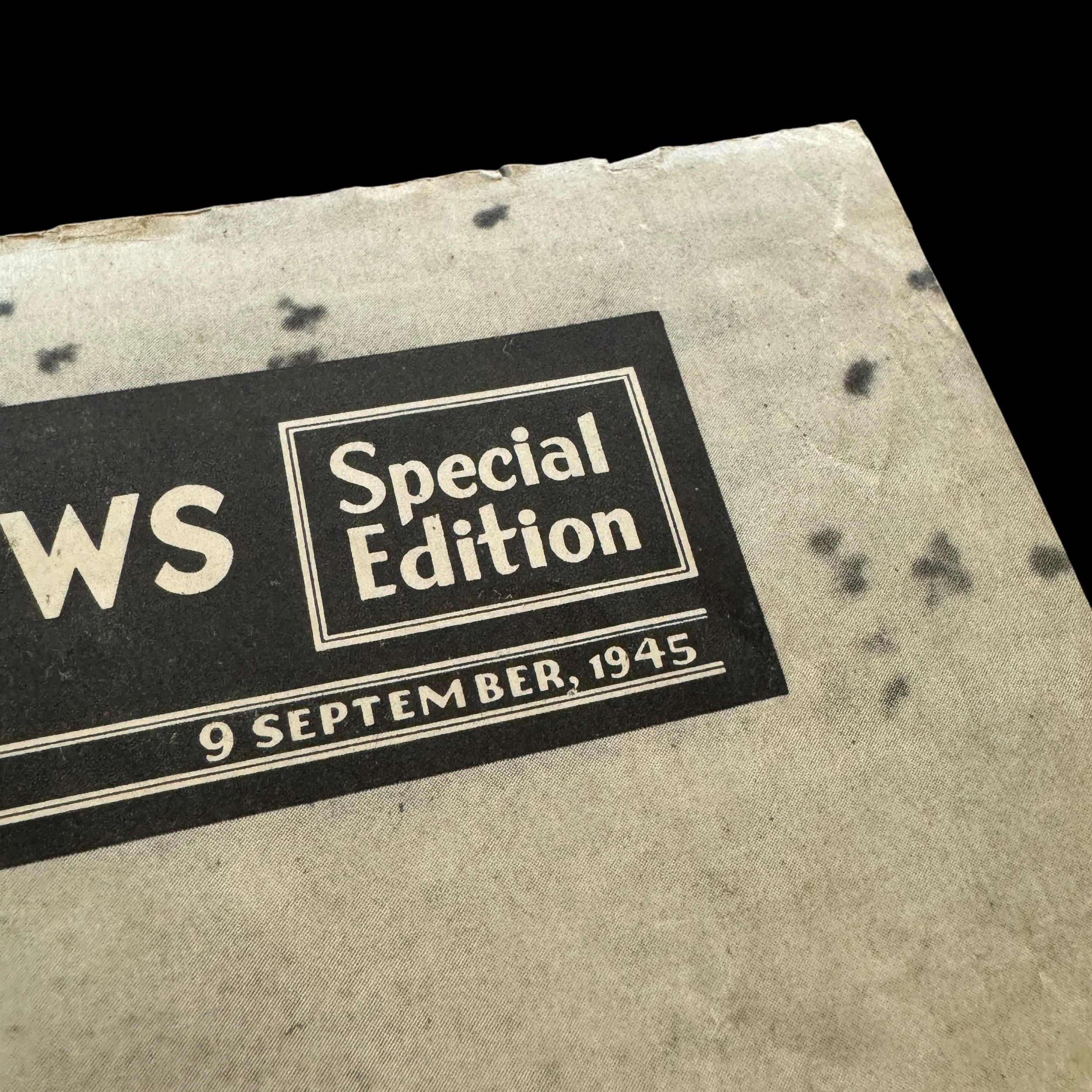
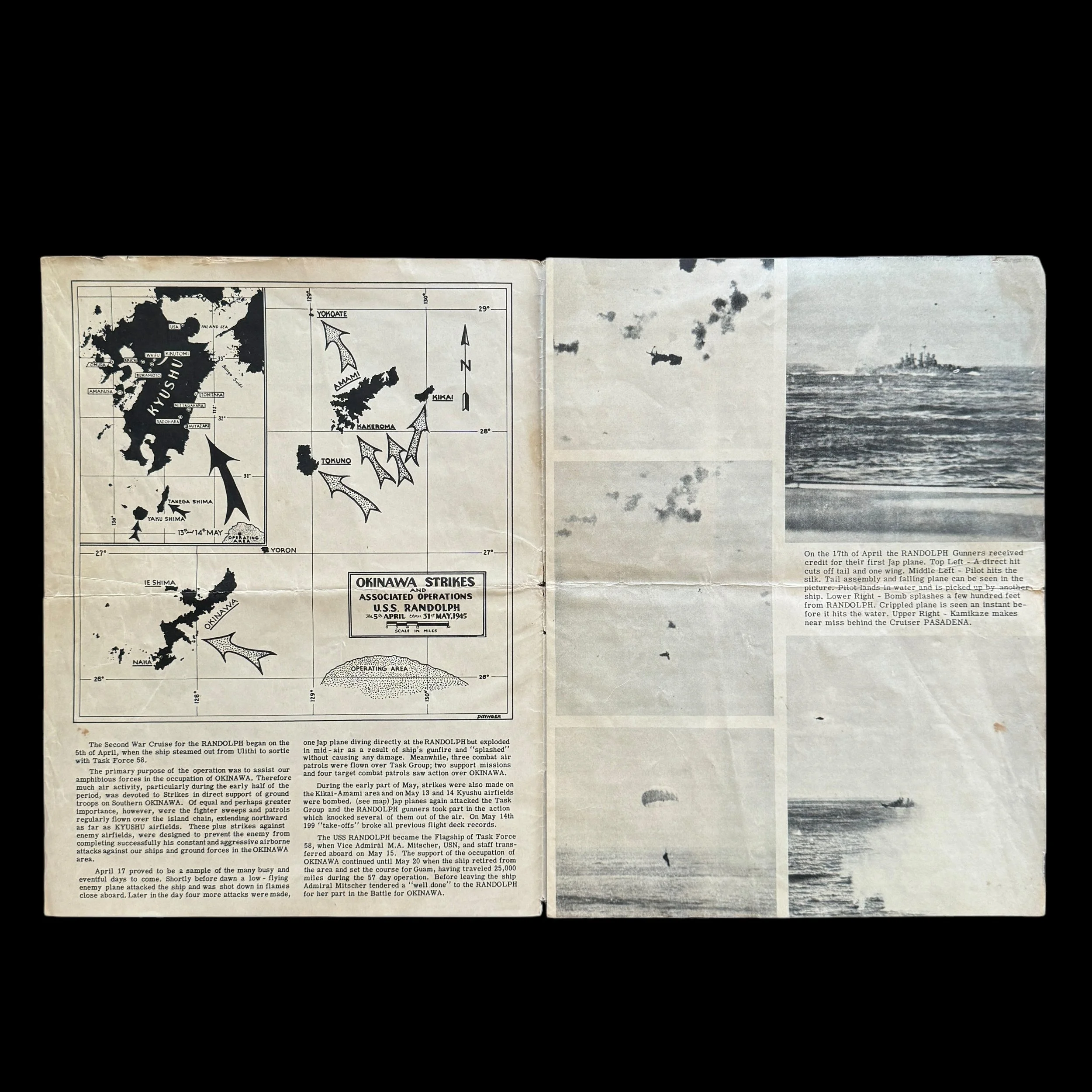
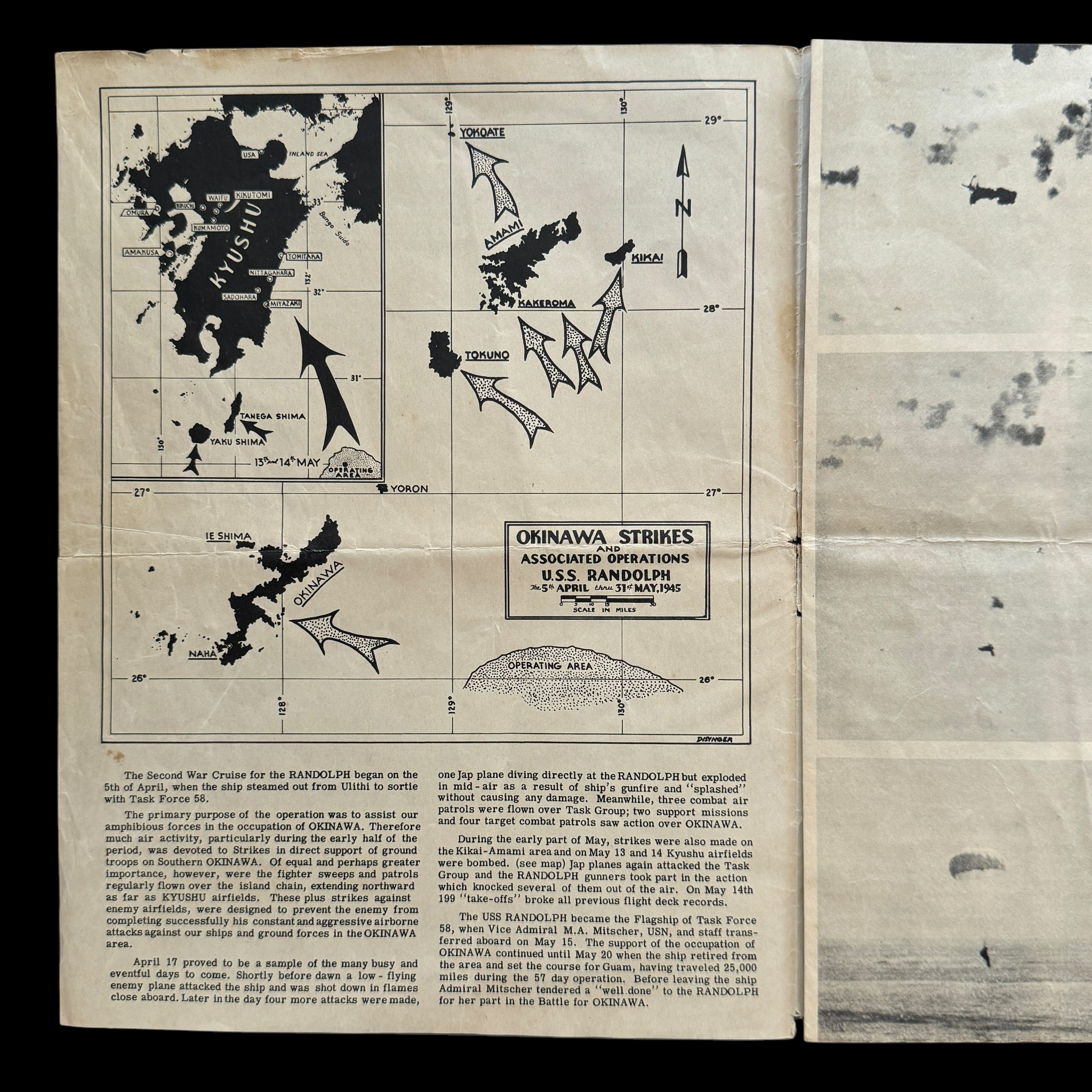
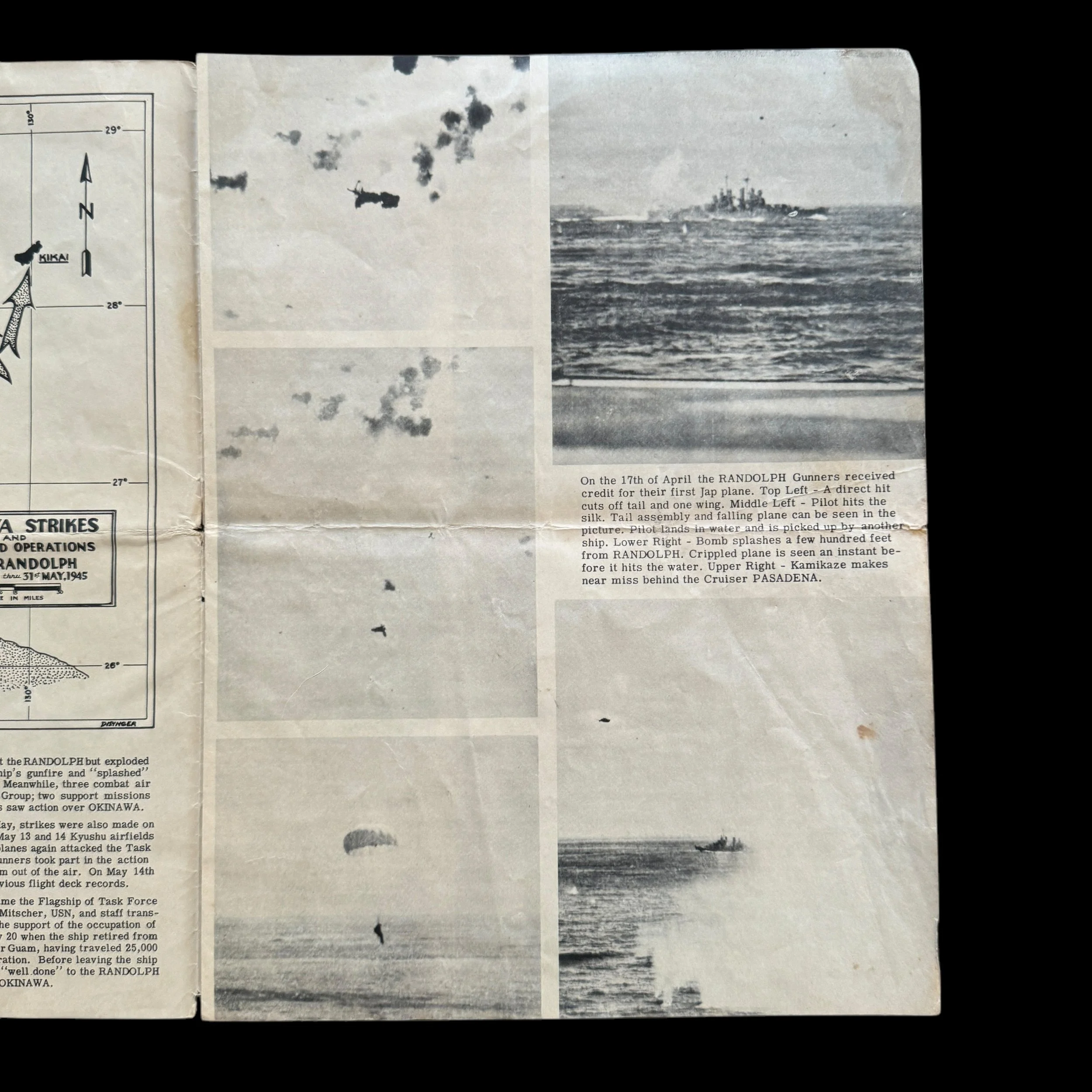
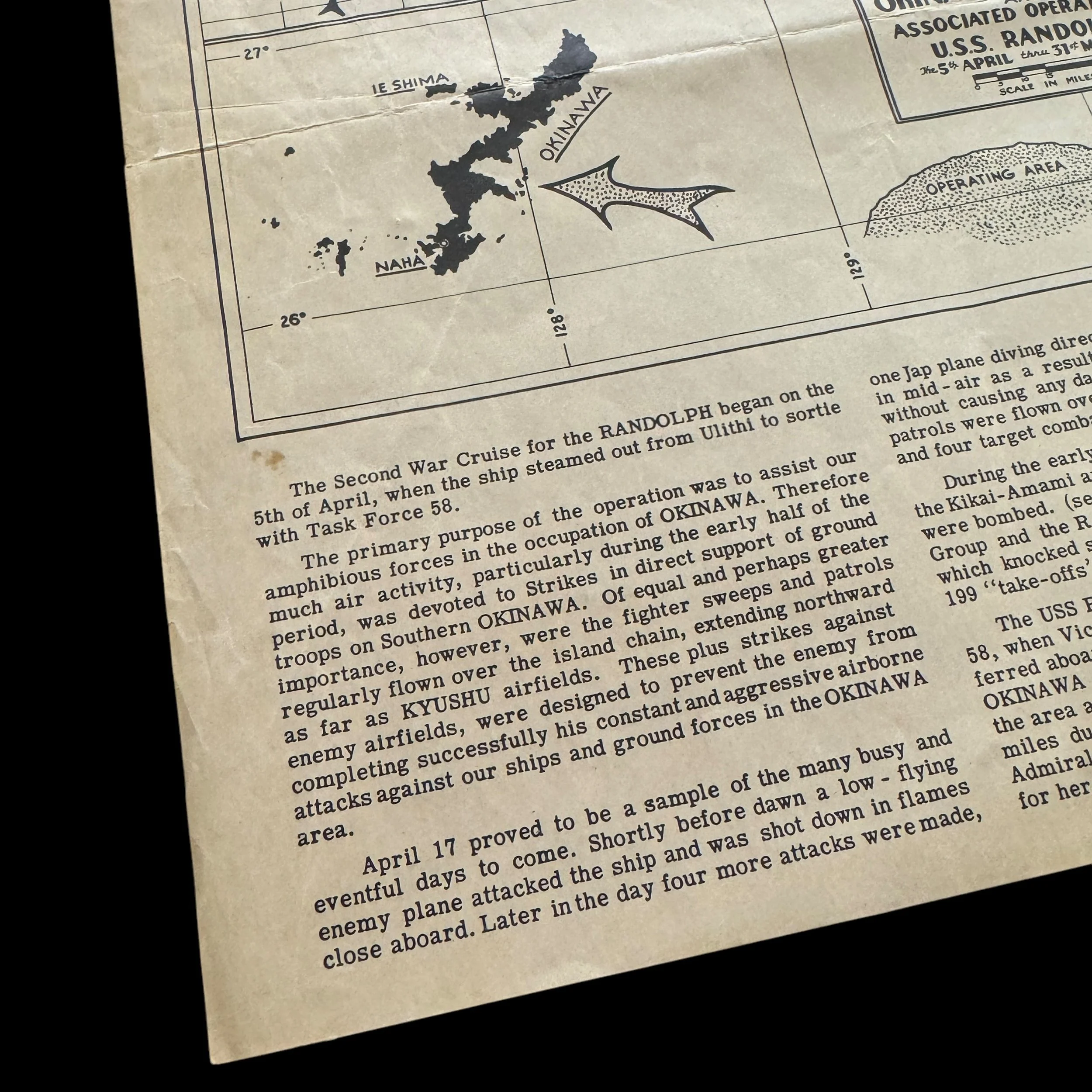
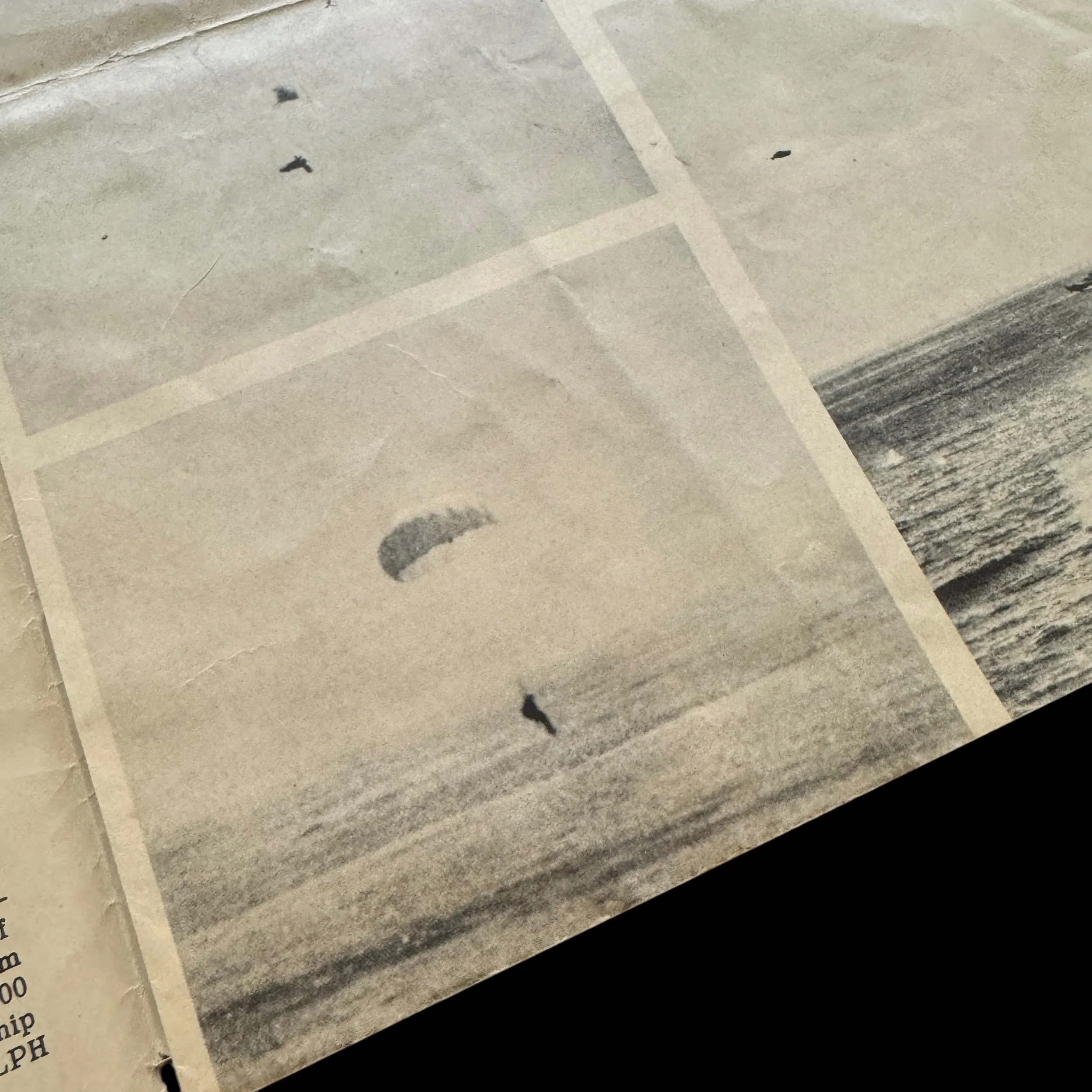
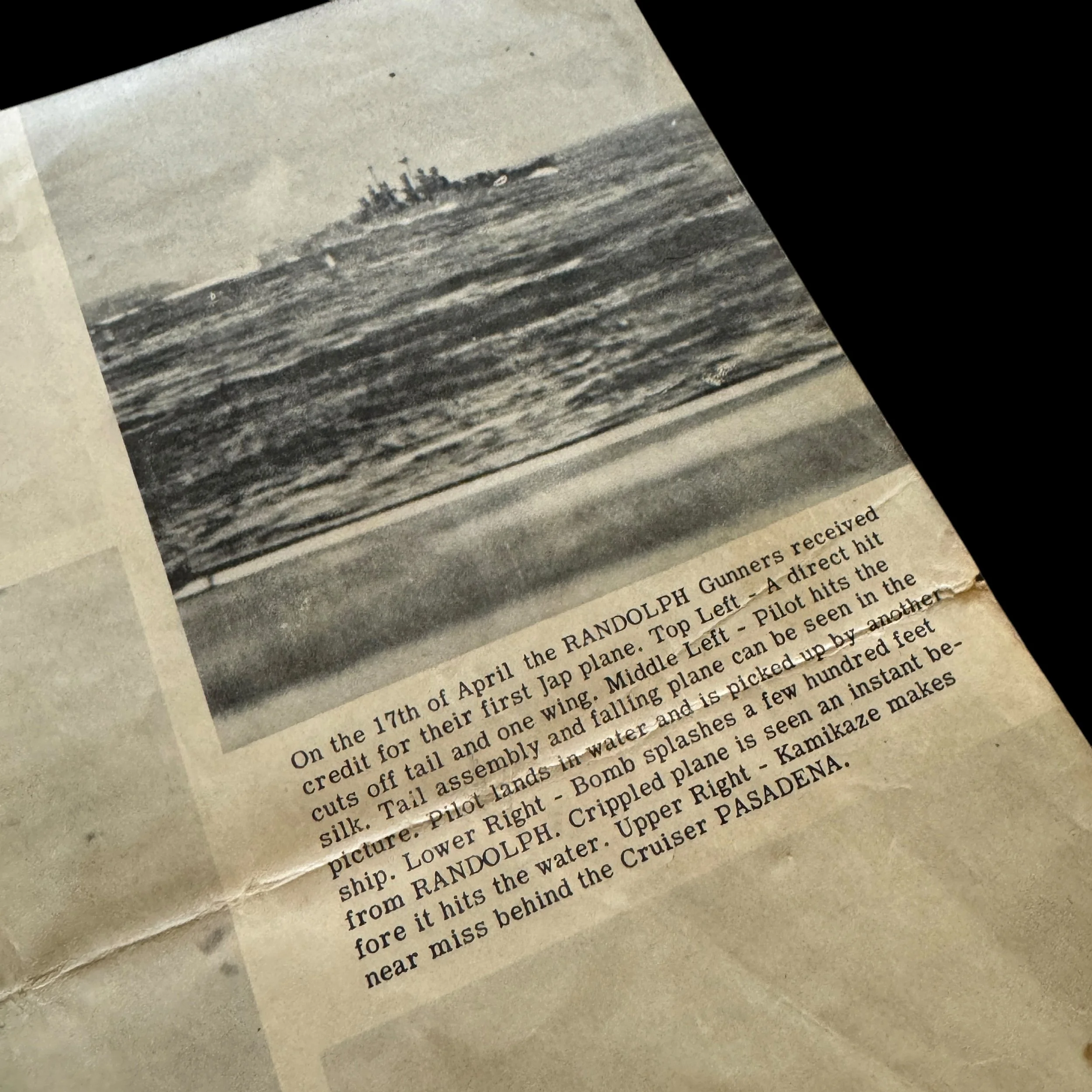
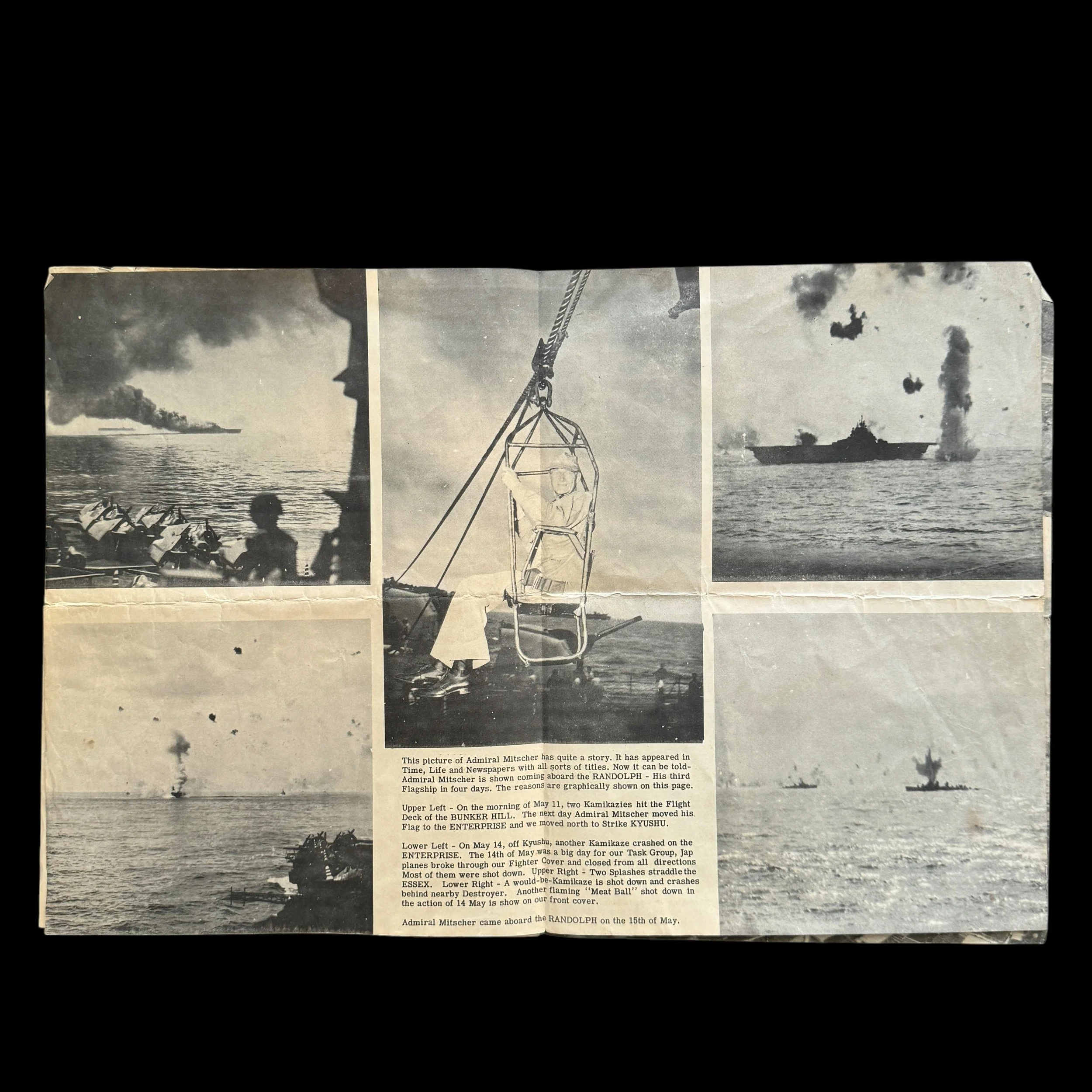
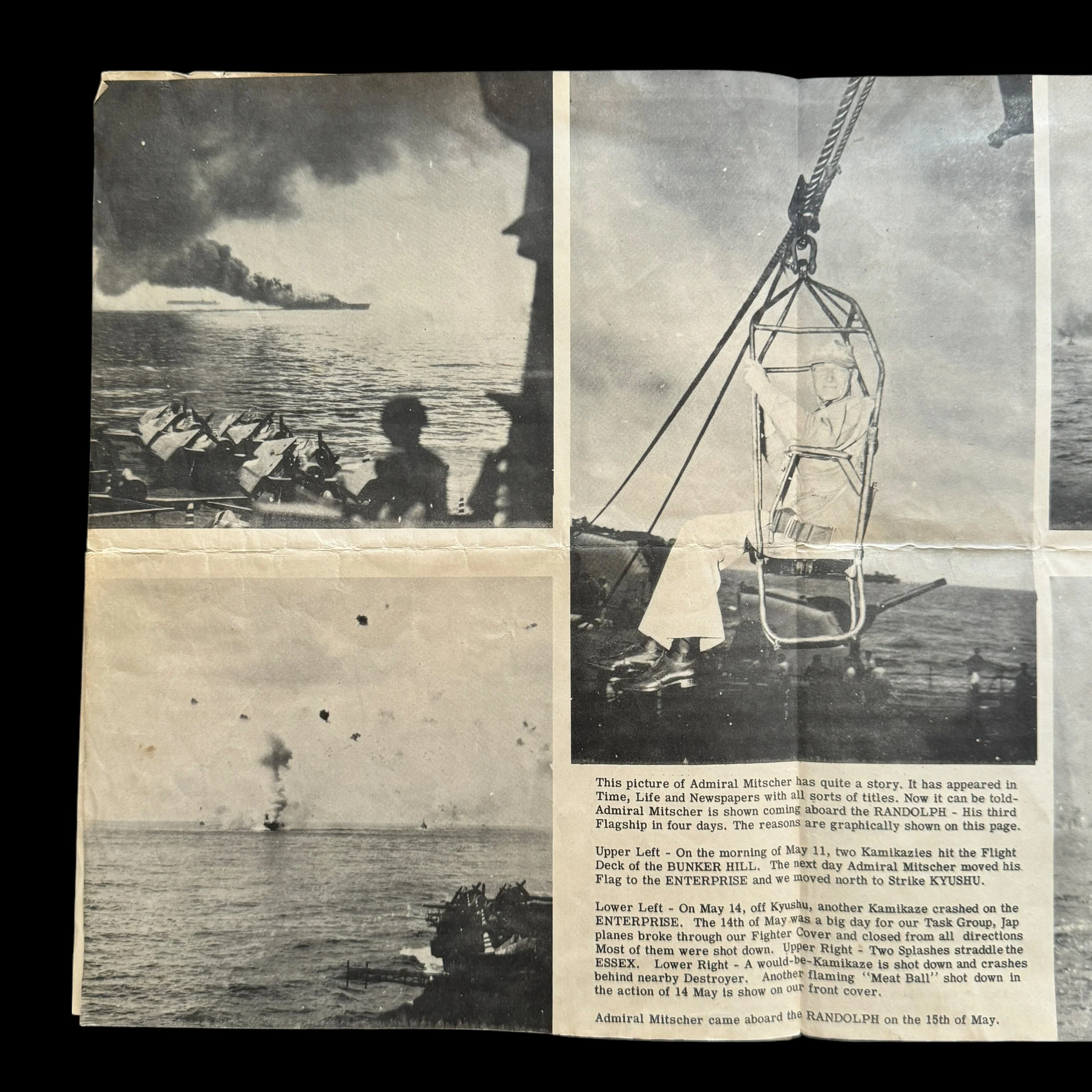
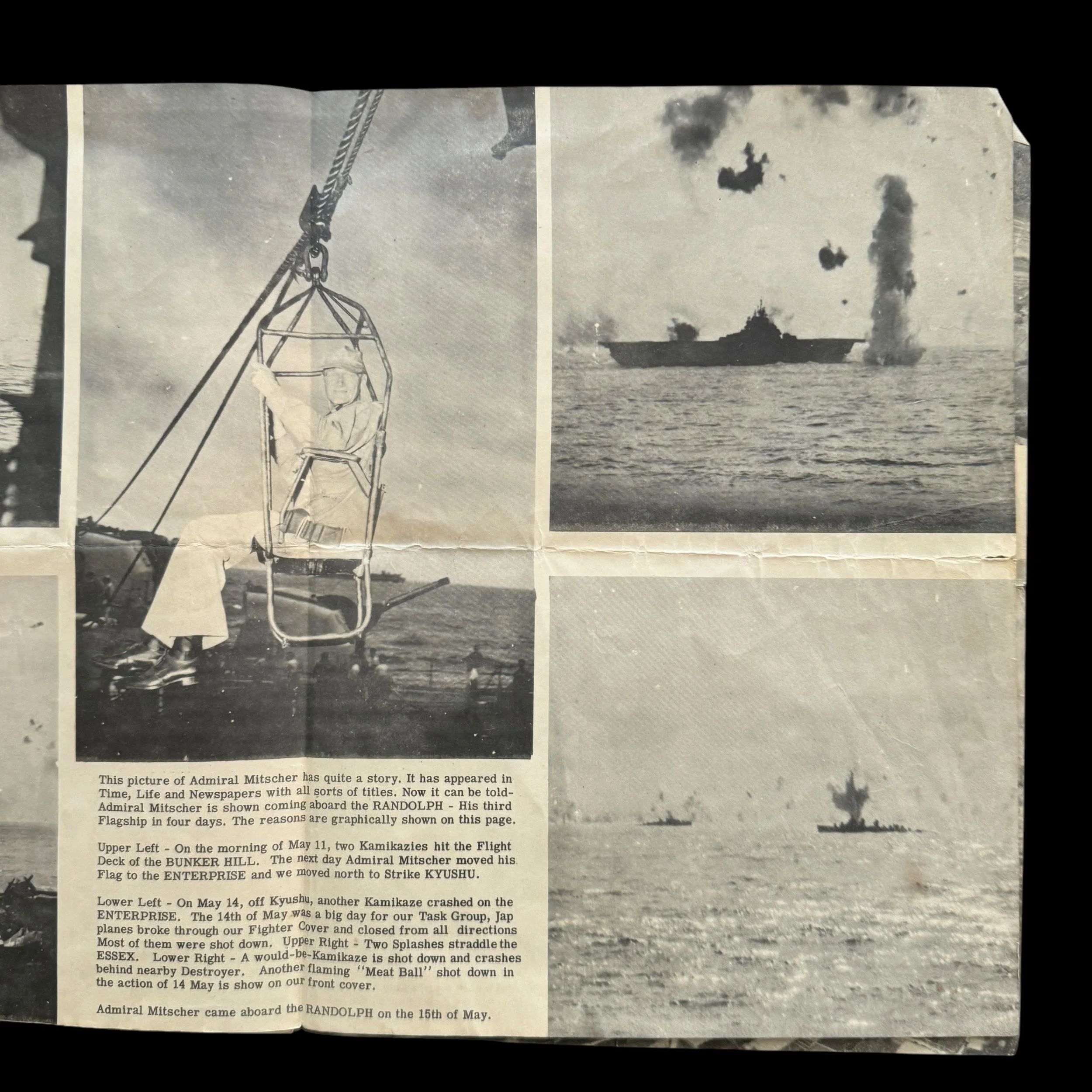
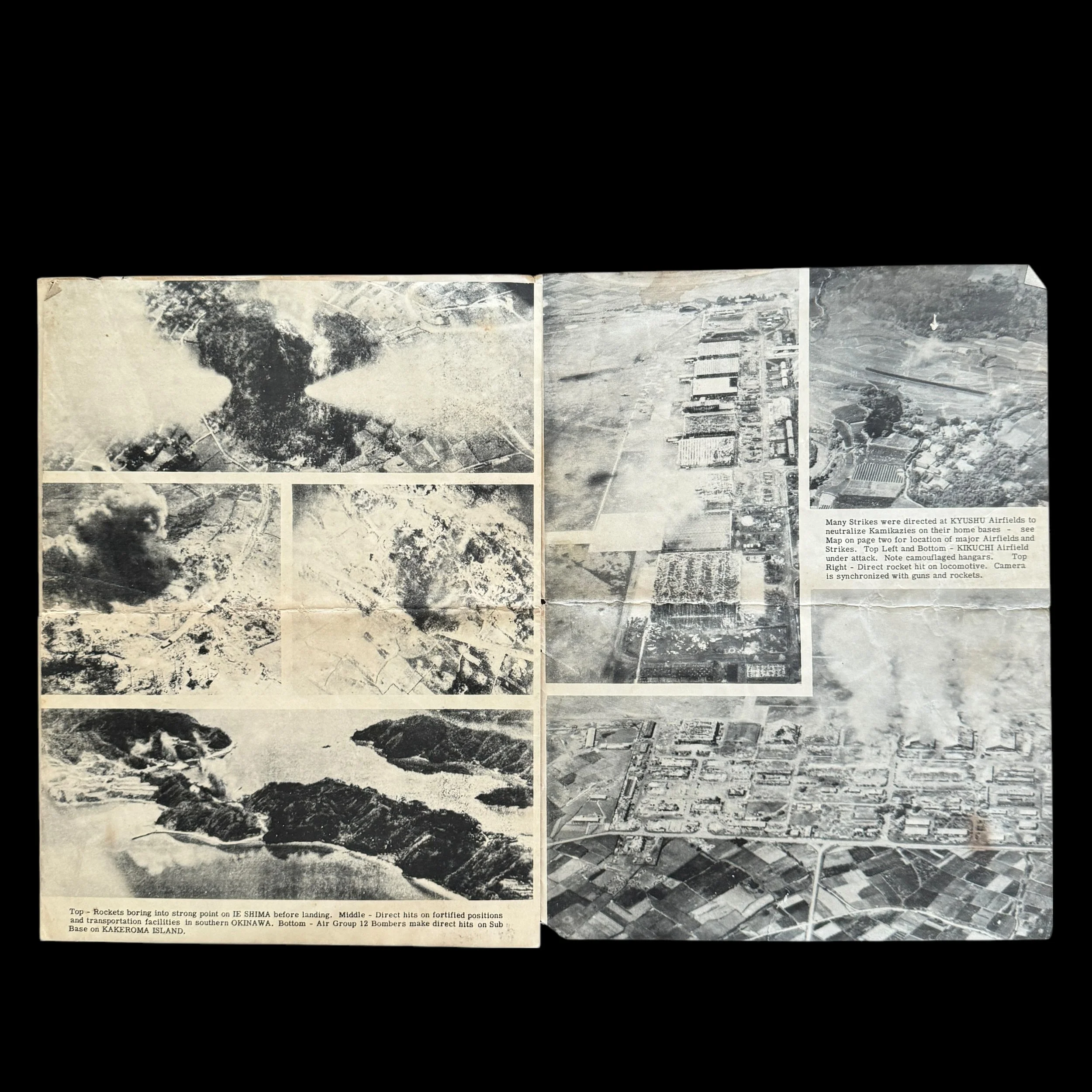

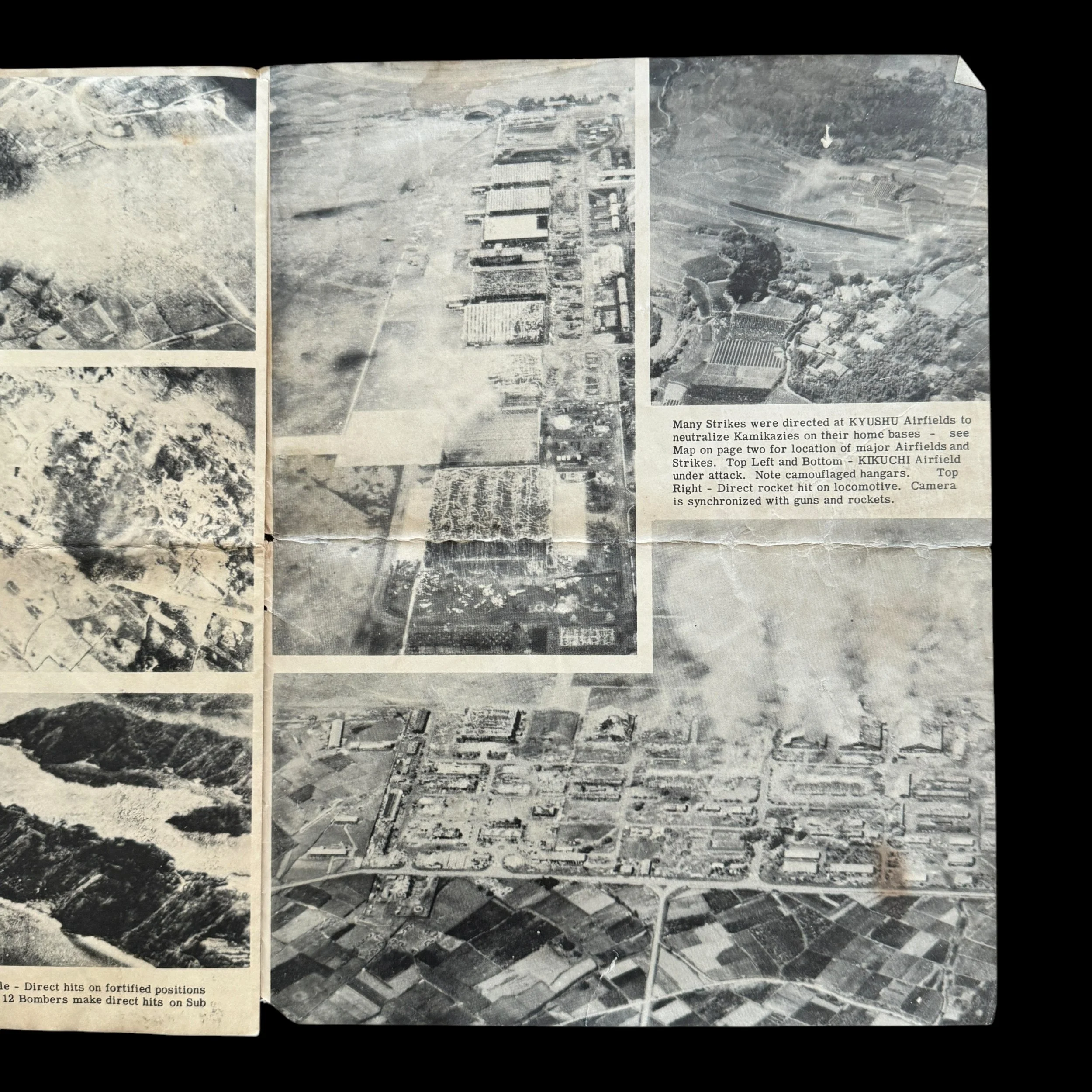
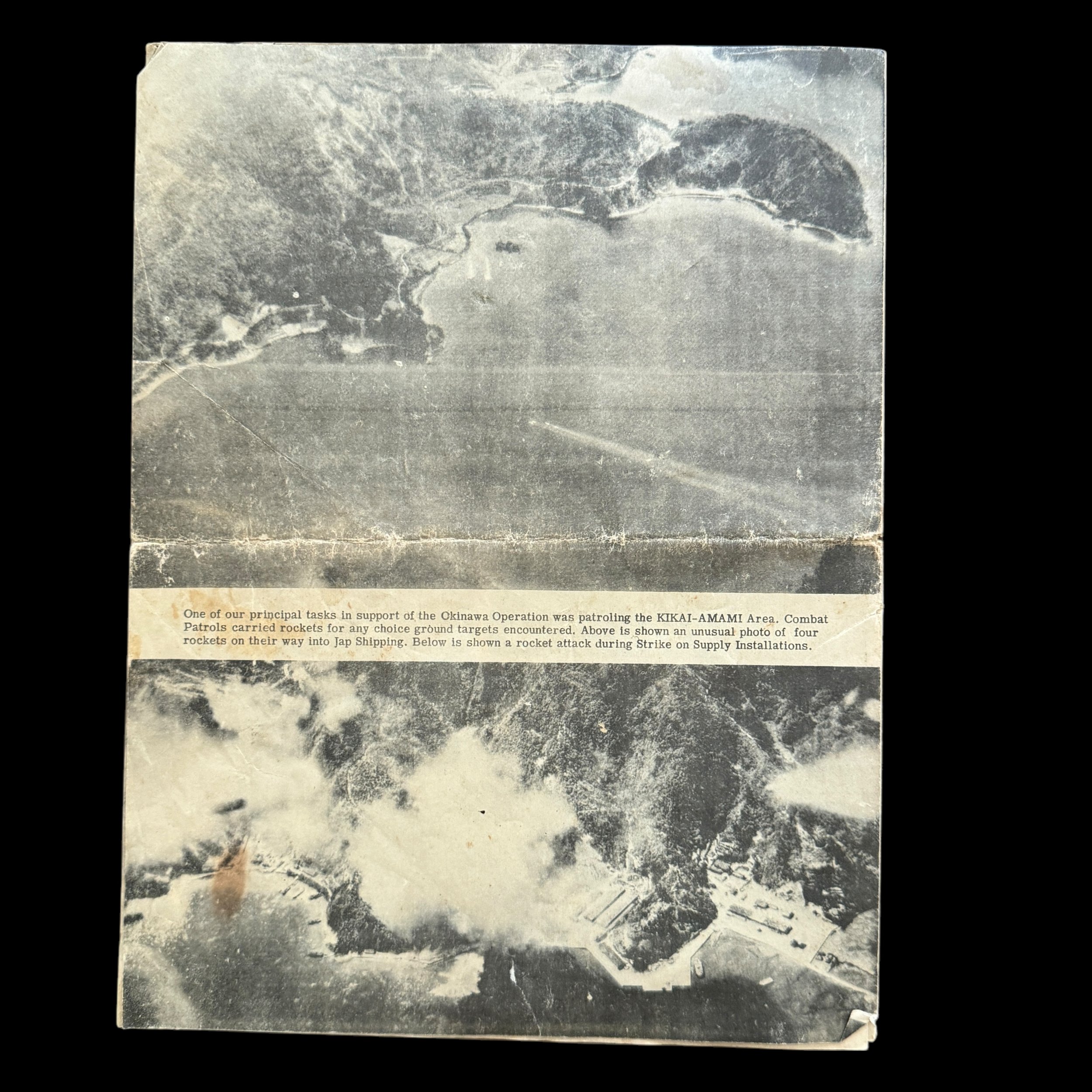
RARE! WWII 1945 U.S.S. Randolph (CV-15) Battle of Okinawa "Theater-Made" April 5th - May 31st, 1945. After Action Report with Combat Photographs (7 Pages)
Comes with a hand-signed C.O.A. and added historical research
The U.S.S. Randolph (CV-15)holds a distinguished place in the annals of naval history, particularly during its service in the Pacific Theater during World War II. Among its many contributions, the ship played a pivotal role during the Battle of Okinawa, a critical and grueling campaign that lasted from April 1 to June 22, 1945.
This rare and museum-grade artifact is a a seven-page action report created aboard the USS Randolph following the surrender of Japan that provides invaluable insight into the ship's operations during this Okinawa campaign. This report, crafted directly by those aboard the vessel, contains detailed accounts of naval actions, strike missions, and defense maneuvers, along with previously unseen photographs that capture the intensity of the battle and the ship’s contributions.
The Battle of Okinawa and the U.S.S. Randolph (CV-15)
The Battle of Okinawa, code-named Operation Iceberg, was the largest amphibious assault in the Pacific Theater during World War II. Okinawa's strategic importance lay in its proximity to Japan, making it a critical stepping stone for the planned invasion of the Japanese mainland. The campaign was marked by ferocious combat, including large-scale kamikaze attacks, extensive ground battles, and heavy losses on both sides. The U.S.S. Randolph, an Essex-class aircraft carrier, was a vital component of Task Force 58, contributing to air superiority, ground support, and maritime defense.
Commissioned in October 1944, the Randolph was equipped with advanced radar systems, fighter planes, dive bombers, and torpedo bombers, making it a formidable force. By the time of the Okinawa campaign, the Randolph had already seen action in other critical operations, but the Battle of Okinawa tested its crew and capabilities like never before.
The Action Report: A Rare Artifact
This seven-page action report, created aboard the U.S.S. Randolph after the Japanese surrender in September 1945, offers a vivid, firsthand account of the ship's activities during the Okinawa campaign. As a "theater-made" document, it is not merely an official Navy-issued report but rather a product of the ship's crew, reflecting their direct experiences and observations. This rare document includes:
Unseen Photographs:The report is illustrated with rare photographs of kamikaze attacks, which were a defining feature of the Okinawa campaign. These images capture the chaos and danger faced by the Randolph and its crew as Japanese suicide planes targeted American vessels in relentless waves.
Descriptions of Naval Actions:Detailed accounts of the Randolph's fire support missions, defensive maneuvers, and coordination with other ships in the task force. These actions were critical in protecting the fleet and supporting ground troops.
Aerial and Strike Missions:Insights into the aerial operations conducted by the Randolph's air group, including bombing raids on Japanese positions and kamikaze staging areas on Okinawa. The document describes the precision and intensity of these missions, which were instrumental in weakening Japanese defenses.
Firefighting and Damage Control:Accounts of the Randolph's crew combating fires and damage caused by kamikaze attacks. The report highlights the bravery and efficiency of the sailors in maintaining the ship's operational status under duress.
Strategic Analysis:Reflections on the effectiveness of the carrier's strategies and the overall impact of Task Force 58 during the campaign. The report underscores the importance of naval aviation in securing victory.
The Kamikaze Threat and the Randolph’s Resilience
The kamikaze attacks during the Battle of Okinawa were among the most intense of the war, as the Japanese deployed hundreds of planes in desperate suicide missions. On March 11, 1945, just weeks before the main Okinawa operation began, the Randolph had already survived a kamikaze strike while docked at Ulithi Atoll. This experience likely steeled the crew for the challenges ahead.
During the Okinawa campaign, the Randolph's air group engaged in relentless operations to neutralize kamikaze threats before they could reach the fleet. The action report provides vivid descriptions of these missions, detailing the coordination between pilots and the carrier's command to intercept enemy planes. It also documents the toll on the crew, who worked tirelessly to maintain combat readiness while enduring constant danger.
The Legacy of the U.S.S. Randolph (CV-15)
The Randolph's contributions to the Battle of Okinawa exemplify the vital role of aircraft carriers in modern naval warfare. By providing air cover, conducting offensive operations, and supporting ground forces, the Randolph and its crew helped secure a hard-fought victory that paved the way for the end of the Pacific War. The ship earned three battle stars for its service during World War II and continued to serve in various capacities until its decommissioning in 1969.
The U.S.S. Randolph (CV-15) action report from the Battle of Okinawa is more than a historical artifact; it is a tangible connection to one of the most significant campaigns of World War II. The photographs and detailed accounts within this document bring to life the bravery, sacrifice, and resilience of the Randolph's crew during a pivotal moment in history. As one of the few remaining theater-made reports, it offers unique insights into the challenges and triumphs of naval warfare, preserving the legacy of the Randolph and the broader efforts of the U.S. Navy in securing victory in the Pacific.